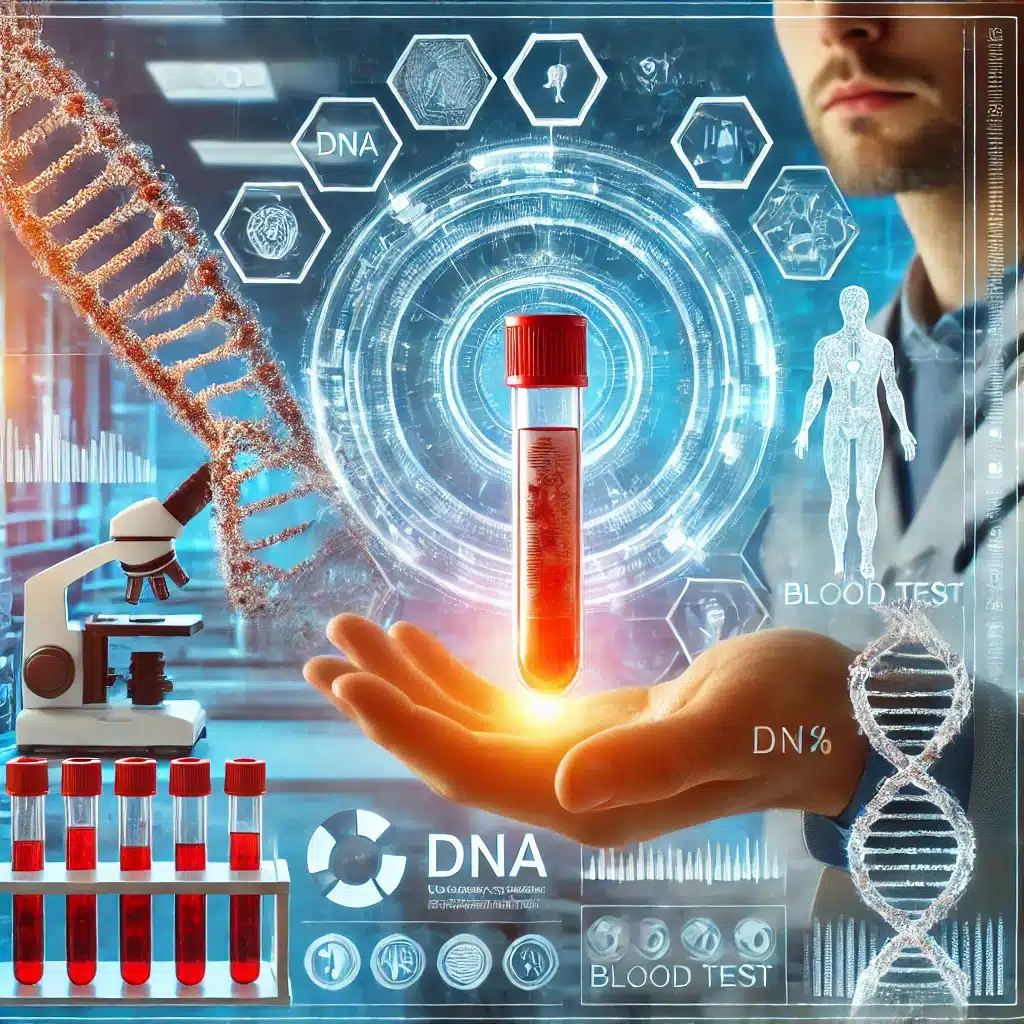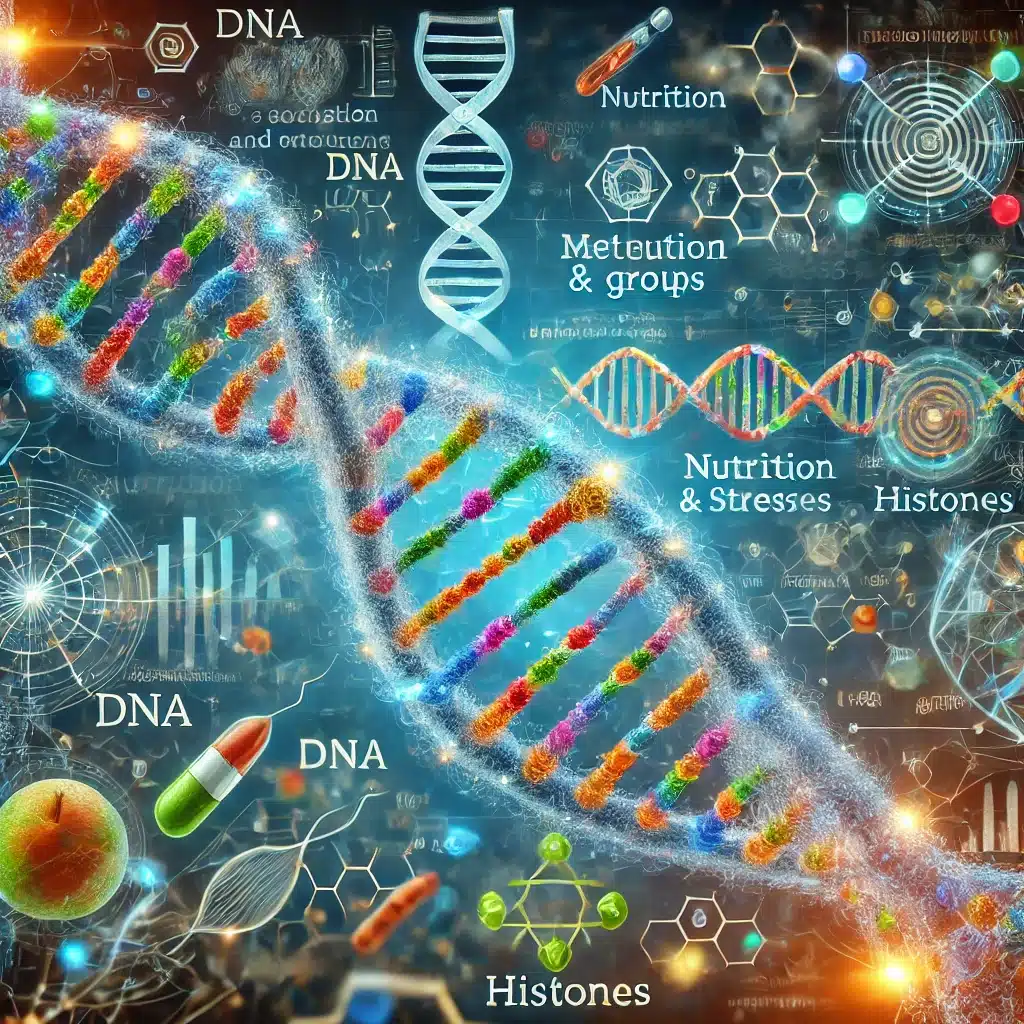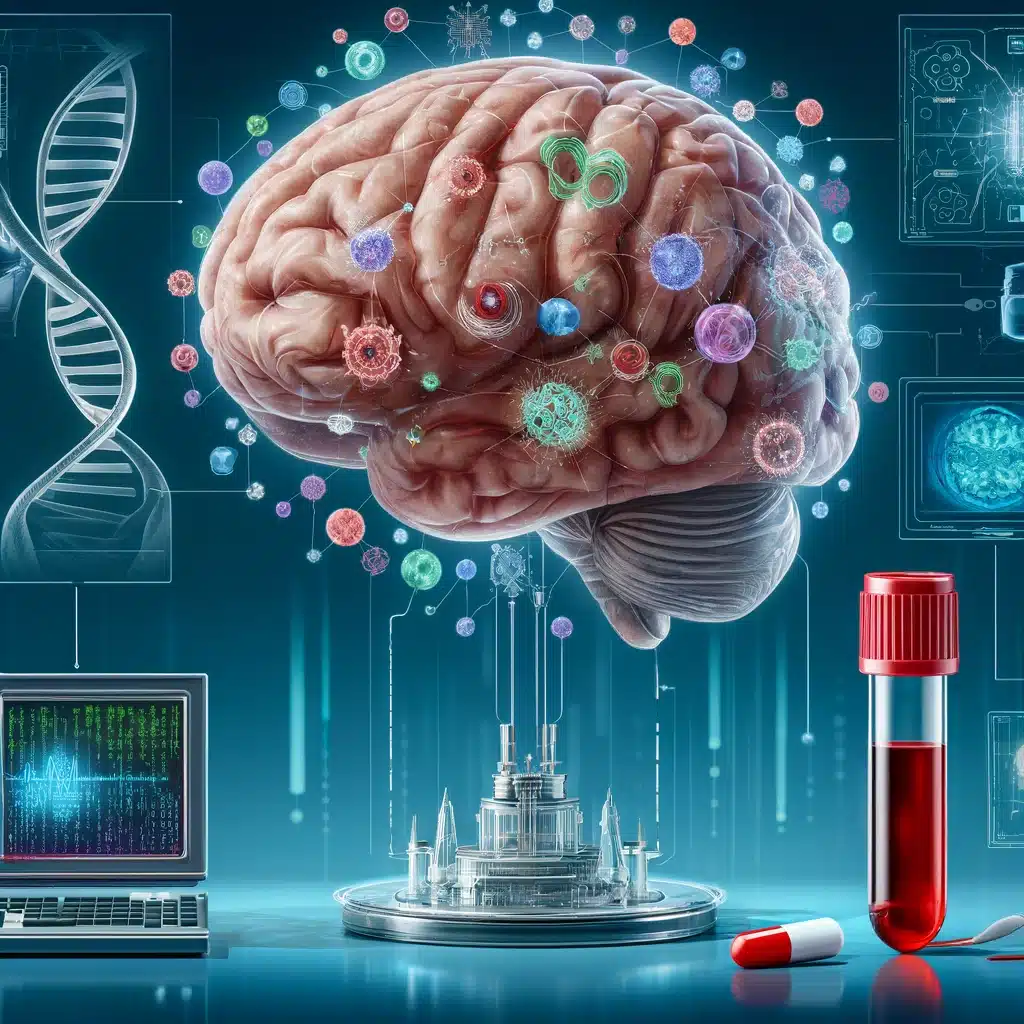A new study uses AutoML and blood DNA methylation data to identify novel gene biomarkers for diagnosing schizophrenia (SCZ) with high accuracy.
Highlights:
- Biomarker Discovery: AutoML identified three schizophrenia-specific gene methylation biomarkers: IGF2BP1, CENPI, and PSME4.
- Methylation Analysis: IGF2BP1 showed higher methylation and PSME4 showed lower methylation in SCZ patients compared to healthy controls, while CENPI did not show significant differences.
- Diagnostic Biosignature: Combining the methylation status of IGF2BP1, PSME4, and CENPI with age and sex, AutoML produced a five-feature biosignature with an AUC of 0.755, effectively distinguishing SCZ patients from healthy individuals.
- Functional Relevance: The identified genes are involved in key biological processes such as neuronal development and DNA repair, suggesting their relevance to schizophrenia pathology.
- Clinical Implications: This study highlights the potential of blood-based epigenetic biomarkers for the minimally invasive diagnosis and understanding of schizophrenia.
Source: Translational Psychiatry (2024)
Genetic & Epigenetic Underpinnings of Schizophrenia
Genetics
Heritability: Schizophrenia (SCZ) has a strong genetic component, with heritability estimates around 80%. This indicates that a significant proportion of the risk for developing SCZ is inherited.
Risk Genes: Numerous genes have been associated with SCZ, including those involved in neurotransmission, neurodevelopment, and synaptic function. Key examples include:
- COMT (Catechol-O-Methyltransferase): Involved in dopamine metabolism, variations in this gene affect cognitive functions and are linked to SCZ.
- DISC1 (Disrupted in Schizophrenia 1): Plays a role in neurodevelopment and synaptic regulation, with mutations leading to increased SCZ risk.
- NRG1 (Neuregulin 1): Involved in neural development and synaptic plasticity, associated with altered brain connectivity in SCZ patients.
Epigenetics
DNA Methylation: This involves the addition of methyl groups to DNA, typically acting to repress gene transcription. Abnormal DNA methylation patterns have been observed in SCZ patients.
- RELN (Reelin): Increased methylation of the RELN promoter has been found in the brains and blood of SCZ patients, leading to decreased expression of this critical neurodevelopmental gene.
- BDNF (Brain-Derived Neurotrophic Factor): Altered methylation patterns of BDNF are associated with SCZ, affecting neural growth and plasticity.
Histone Modifications: These involve changes to the proteins around which DNA is wound, affecting gene expression without altering the DNA sequence.
- H3K4me3 and H3K27me3: Specific histone modifications associated with active and repressed genes, respectively, have been linked to SCZ, influencing genes involved in neural development and immune response.
Non-Coding RNAs: MicroRNAs (miRNAs) and long non-coding RNAs (lncRNAs) regulate gene expression post-transcriptionally and have been implicated in SCZ.
- miR-137: A microRNA that targets genes involved in synaptic development and neurotransmission; its dysregulation is associated with SCZ.
Gene-Environment Interactions
Environmental Stressors: Factors such as prenatal infections, malnutrition, childhood trauma, and cannabis use can interact with genetic predispositions to increase SCZ risk.
- Urbanicity and Stress: Growing up in an urban environment and experiencing high levels of stress are linked to increased SCZ risk, possibly through epigenetic modifications.
- Cannabis Use: Adolescents with a genetic predisposition to SCZ who use cannabis are at a higher risk of developing the disorder, with evidence suggesting epigenetic mechanisms at play.
Major Findings: First-Episode Schizophrenia (SCZ) Biomarkers (2024)

1. Identification of Specific Biomarkers
Researchers used automated machine learning (AutoML) to analyze blood DNA methylation data from schizophrenia (SCZ) patients and healthy individuals.
This process identified 3 specific genes with altered methylation patterns in SCZ patients:
- IGF2BP1: Found to have higher methylation levels in SCZ patients compared to healthy controls.
- PSME4: Found to have lower methylation levels in SCZ patients compared to healthy controls.
- CENPI: Did not show significant differences in methylation levels between SCZ patients and healthy controls.
2. Diagnostic Biosignature Development
By combining the methylation data of the three identified genes with patient demographics (age and sex), the researchers developed a diagnostic biosignature using AutoML.
This biosignature demonstrated high accuracy in distinguishing SCZ patients from healthy individuals:
Performance Metrics:
- Area Under the Curve (AUC): 0.755
- Average Precision: 0.758
3. Functional Analysis of Identified Genes
The identified genes are involved in critical biological processes relevant to SCZ:
IGF2BP1:
- Involved in neuronal development, migration, and specification.
- Plays a role in cytoskeletal signaling and translational control.
- Implicated in the Wnt/Hedgehog/Notch pathways and cytokine production.
PSME4:
- Associated with DNA repair and cellular response to DNA damage.
- Involved in the removal of the Cdc6 protein during cell cycle regulation.
CENPI:
- Associated with centromere complex assembly and sex differentiation.
3. Experimental Validation
The methylation profiles of the identified genes were validated using blood samples from 30 first-episode, drug-naive SCZ patients and 30 healthy controls:
Validation Results:
- IGF2BP1: Higher methylation in SCZ patients.
- PSME4: Lower methylation in SCZ patients.
- CENPI: No significant difference between SCZ patients and healthy controls.
4. AutoML Predictive Analysis
Further AutoML analysis combined methylation data with demographic information to produce a best-performing 5-feature biosignature that included:
Methylation status of IGF2BP1, PSME4, and CENPI.
Age and sex of the patients.
Model Performance:
- AUC: 0.755
- Accuracy: 0.720
- Average Precision: 0.758
Study Details: First-Episode Schizophrenia Diagnosis via Epigenetic Signature (2024)

Participants/Sample
Schizophrenia Patients (SCZ): 30 first-episode, drug-naive patients. 18-45 years of age.
Inclusion criteria: Diagnosed with schizophrenia, schizoaffective disorder, schizophreniform disorder, brief psychotic disorder, or psychotic disorder not otherwise specified.
Exclusion criteria: Chronic or acute physical and Axis I mental comorbidities, BMI outside 18-30 kg/m², substance abuse, excessive alcohol consumption, abnormal physical/neurological examinations, pregnancy, nursing, abnormal ECG.
Healthy Controls (CTRL): 30 age- and sex-matched healthy individuals. Recruited from a blood donation unit. Same exclusion criteria as SCZ patients.
Methods
Data Collection:
- Blood samples were obtained from both SCZ patients and healthy controls.
- Genomic DNA (gDNA) was extracted from blood samples.
- DNA was bisulfite converted for methylation analysis.
Methylation Analysis:
- Quantitative Methylation-Specific PCR (qMSP) was used to measure the methylation levels of identified genes (IGF2BP1, PSME4, CENPI).
- Primers specific for the methylated sequences were designed and optimized.
- Methylation levels were calculated using the 2-ΔΔCT method.
AutoML Analysis:
- AutoML platform JADBio was used to analyze genome-wide DNA methylation data.
- Identified gene methylation biomarkers were validated through qMSP assays.
- A five-feature biosignature was developed combining gene methylation data with demographic information (age and sex).
Statistical Analysis:
- Kolmogorov–Smirnov test for normality.
- Mann–Whitney U test and Spearman correlation test for pairwise comparisons.
- Performance metrics for biosignature models: AUC and average precision.
Limitations
- Sample Size: Relatively small sample size (30 SCZ patients and 30 healthy controls) may limit the generalizability of findings.
- Methylation Differences: CENPI did not show significant methylation differences between SCZ patients and healthy controls, which may suggest limited diagnostic value for this gene alone.
- Validation: Findings need to be validated in larger, independent cohorts to confirm clinical utility.
- Environmental Factors: Changes in blood cell composition, which can influence DNA methylation patterns, were not specifically accounted for in the study.
- Specificity: The study focused on SCZ-specific biomarkers; cross-validation with other psychiatric disorders is necessary to ensure specificity.
- Demographics: Inclusion of only age and sex as demographic factors may overlook other relevant variables such as ethnicity, lifestyle, or environmental exposures.
Potential Applications of Epigenetic Biosignature in Schizophrenia
Clinical Diagnosis
Early Detection: The identified blood-based epigenetic biomarkers (IGF2BP1, PSME4, CENPI) can potentially be used for early diagnosis of schizophrenia (SCZ), allowing for timely intervention and management.
Minimally Invasive Testing: Blood tests are less invasive compared to current diagnostic methods, making them more accessible and patient-friendly.
Personalized Medicine: The biomarkers could be integrated into personalized treatment plans, tailoring therapies based on individual methylation profiles.
Research and Development
Understanding Pathophysiology: The functional analysis of identified genes contributes to a deeper understanding of the biological processes involved in SCZ, which can inform future research.
Targeted Therapies: Identifying specific gene methylation patterns opens avenues for developing targeted therapeutic strategies aimed at modifying epigenetic marks.
Public Health
Screening Programs: The development of a reliable blood test for SCZ could be implemented in routine screening programs, especially for high-risk populations, improving early detection rates.
Reducing Stigma: Objective, biological markers for SCZ can help reduce the stigma associated with psychiatric diagnoses by framing them in the context of measurable biological changes.
How accurate is this biosignature for schizophrenia diagnosis?
The developed five-feature biosignature combining gene methylation data and demographics (age and sex) achieved an AUC of 0.755.
This indicates a good level of accuracy in distinguishing schizophrenia patients from healthy individuals.
The biosignature achieved an average precision of 0.758, reflecting a high degree of reliability in identifying true positive cases of schizophrenia.
The model’s performance, with an AUC of 0.755, is competitive with other diagnostic models in psychiatry, demonstrating its potential utility in clinical settings.
That said, we must consider the limitations: small sample size (30 schizophrenia patients), generalizability (need validation in larger cohorts), and feature selection (other variables may improve the model’s accuracy).
Conclusion: Epigenetic Biosignature to Diagnose Schizophrenia
References
- Study: A novel blood-based epigenetic biosignature in first-episode schizophrenia patients through automated machine learning (2024)
- Authors: Makrina Karaglani et al.







